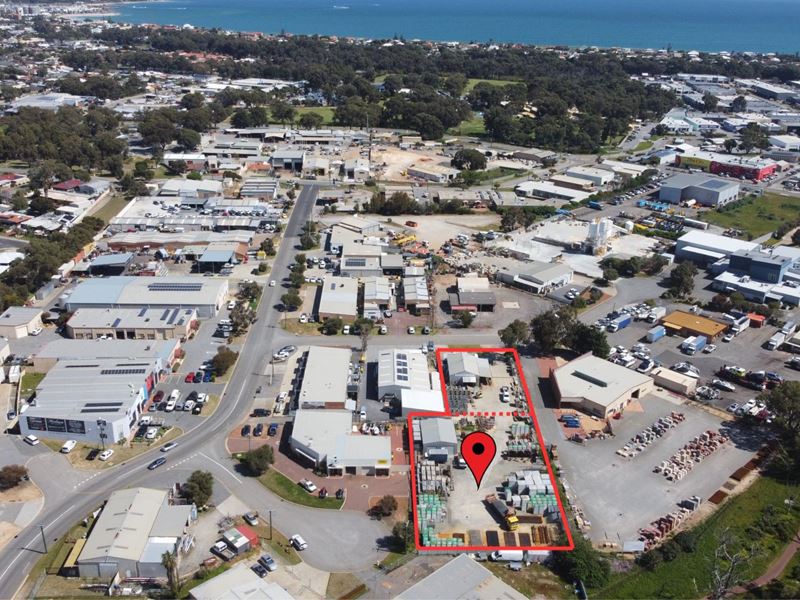Commercial Properties for Sale in Melbourne: Top Listings
Commercial Properties for Sale in Melbourne: Top Listings
Blog Article
Industrial Characteristics for Sale: Trick Insights for Savvy Financiers
In the present landscape of commercial real estate, discerning financiers have to navigate a complex selection of market characteristics and assessment methods to identify profitable possibilities. As we explore the multifaceted methods to reviewing industrial residential or commercial properties for sale, one concern stays: what details methods can raise your investment game in this competitive field?
Comprehending Market Fads
Understanding market trends is necessary for making informed choices in the business property sector. Financiers need to assess different signs, including prices patterns, need and supply characteristics, and financial problems, to evaluate the marketplace landscape successfully.
Secret metrics such as tenancy prices, rental returns, and transaction volumes provide essential understandings right into market wellness. A rising tenancy rate may indicate a boosting demand for commercial areas, triggering financiers to consider tactical purchases. Alternatively, declining rental yields could indicate oversupply or economic recessions, warranting caution in investment methods.
Additionally, macroeconomic elements such as rates of interest, inflation, and employment rates substantially affect business residential or commercial property performance. A robust economic situation typically cultivates service development, resulting in higher need for industrial areas. On the other hand, financial downturns can lower need, influencing property values and rental income.
Remaining abreast of regional and national market patterns permits investors to profit from opportunities and reduce dangers. Utilizing thorough market analyses and records can improve decision-making procedures, enabling capitalists to straighten their techniques with prevailing market problems. Inevitably, recognizing market patterns is critical for attaining success in the competitive field of business property.
Location Analysis Methods
Efficient location evaluation strategies are crucial for determining the optimal sites for industrial properties. Financiers must assess numerous aspects that influence the worth and capability of a location. One main technique is the use of Geographic Info Systems (GIS), which enables the visualization and analysis of spatial data, aiding capitalists identify patterns and patterns connected to demographics, website traffic flow, and closeness to competitors.

Another important technique is website visits, which enable capitalists to experience the area firsthand, assessing elements that might not appear in data alone, such as community characteristics and accessibility. By utilizing these strategies, financiers can make educated decisions that line up with their investment techniques, inevitably improving their possibilities for success in the affordable commercial actual estate market.
Examining Residential Or Commercial Property Worth
After carrying out an extensive area analysis, the following action is to review the residential or commercial property value, which is a basic facet of making educated investment decisions. Home valuation includes numerous techniques that provide insight into the possession's worth and possible return on investment.
The three primary approaches to residential or commercial property assessment include the price strategy, the sales contrast technique, and the income strategy. The expense approach approximates the value based upon the expense to reproduce the property, minus depreciation. This technique is particularly valuable for new building and constructions or distinct homes doing not have comparables.
The sales comparison method includes evaluating current sales of similar properties in the location. This approach needs a comprehensive understanding of the neighborhood market and can be influenced by market trends, demand, and supply dynamics.
Finally, the earnings strategy is essential for investor-focused properties, as it reviews potential income generation with rental returns. This approach thinks about internet operating income and capitalization prices, offering a clear photo of economic feasibility.
Involving an expert appraiser can improve the accuracy of these analyses, making sure that investors make decisions based on trusted data and market facts.
Assessing Investment Risks
Financial investment threats in industrial residential or commercial property deals can considerably influence possible returns and overall economic stability. Financiers should perform extensive due persistance to recognize and reduce these threats efficiently. Key considerations include market variations, renter dependability, and property-specific concerns.
Market risks, consisting of financial declines and changes in neighborhood need, can affect residential or commercial property values and rental income. Comprehending the financial indicators and fads in the area can help investors anticipate possible declines.
Property-specific dangers, such as maintenance issues or zoning adjustments, can also present obstacles. A thorough assessment and an understanding of local laws can discover potential responsibilities that may not be right away apparent. Furthermore, environmental risks, such as contamination or all-natural disasters, need to be assessed, as they can bring about significant monetary worries.

Financing Alternatives Readily Available
Navigating the landscape of funding choices is vital for financiers seeking to acquire commercial residential properties. Recognizing the different financing methods readily available can significantly influence financial investment returns and general success.

For those seeking a lot more flexible terms, private lenders or tough cash fundings can be a feasible choice. These sources typically provide to financiers who may not meet standard demands, though they feature higher rates of interest commercial properties for sale in melbourne and much shorter settlement periods. Additionally, government-backed loans, such as those provided by the Small company Administration (SBA), can supply reduced deposit choices and positive terms for qualifying businesses.
Inevitably, capitalists need to assess their economic scenarios, risk resistance, and long-lasting goals to select one of the most suitable funding choice for their industrial home financial investments. Cautious consideration will ensure that they optimize their potential for profitability and success.
Final Thought
To conclude, effective investment in commercial buildings demands an extensive understanding of market fads, effective area analysis, and precise home evaluation. By systematically analyzing investment risks and discovering diverse financing alternatives, investors can improve decision-making procedures and improve prospective returns. A strategic method, based in detailed study and analysis, eventually increases the chance of achieving beneficial end results within the competitive landscape of industrial realty.
In the existing landscape of business real estate, critical investors should browse an intricate selection of market dynamics and evaluation techniques to identify financially rewarding opportunities. A rising occupancy rate might signal an enhancing need for business areas, prompting capitalists to think about tactical purchases.Remaining abreast of nationwide and local market trends enables capitalists to capitalize on possibilities and alleviate risks. Using comprehensive market analyses and records can boost decision-making processes, making it possible for financiers to straighten their strategies with dominating market conditions. By systematically assessing investment threats and discovering diverse funding alternatives, investors can improve decision-making procedures and enhance potential returns.
Report this page